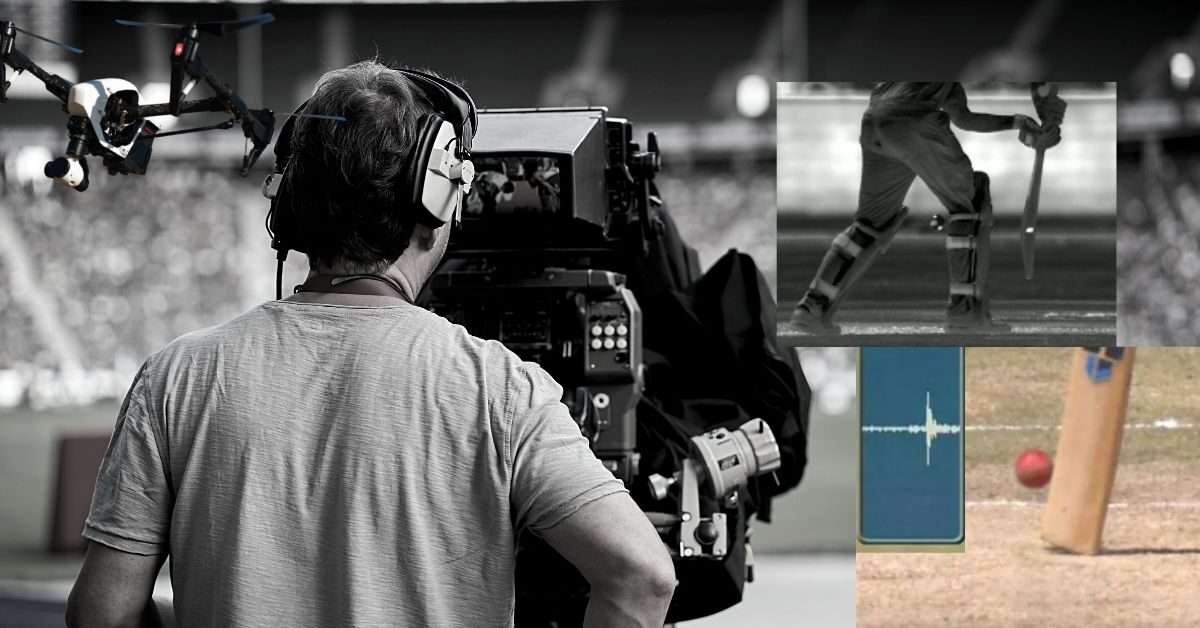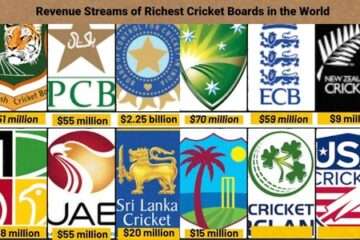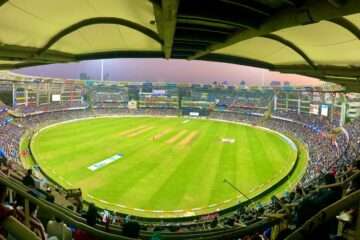Welcome to a discussion on the advancement of technology in cricket!
The use of technology in cricket began in the 1970s with the introduction of electronic scoreboards. In the 1980s and 1990s, video replays and the computer system Hawk-Eye was introduced to assist umpires in making decisions.
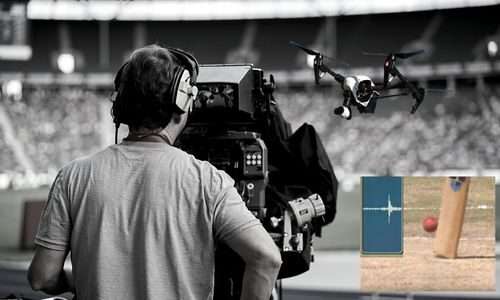
In recent decades, technology in cricket has continued to advance and teams and players now use a variety of technological tools and resources. Including training and analysis software, wearable technology to track player performance, and drones and robotics for training and practice.
In this article, we will explore how advances in technology have affected the game of cricket and the various ways in which technology is being used in sports.
MORE TO EXPLORE
Hawk-Eye Technology in Cricket
Hawk-Eye is an advanced technology that’s used in cricket to help umpires make better decisions during matches. It works by using a bunch of high-speed cameras placed around the stadium to track the ball as it’s bowled and travels through the air. The data from these cameras are then used to create a 3D model of the ball’s trajectory, which is displayed on TV screens and used by the umpires to make decisions.

This technology has been really helpful in international cricket, especially when it comes to tricky dismissals like leg before wicket. It’s also made the viewing experience a lot more interesting for fans, as they can see exactly how the ball is moving in real time. Overall, Hawk-Eye is a pretty impressive piece of technology that’s revolutionized the way cricket is played and watched.
In the past, umpires were often forced to rely on their own judgment and could make mistakes, leading to controversy and disputes. With Hawk-Eye, umpires can now make more informed and accurate decisions, reducing the number of errors and improving the fairness of the game. The main benefit of Hawk-Eye is its ability to improve the accuracy and fairness of umpiring decisions, as well as enhance the viewing experience for fans by providing detailed data and 3D graphics of the game.
Hot spot technology in Cricket
A hot spot is a high-resolution thermal imaging camera that is used to detect if a ball has hit the bat or gloves of a batsman. The camera is positioned at one end of the pitch and is used to scan the area where the ball is expected to hit. If the ball makes contact with the bat or gloves, it generates heat, which is detected by the hot spot camera.
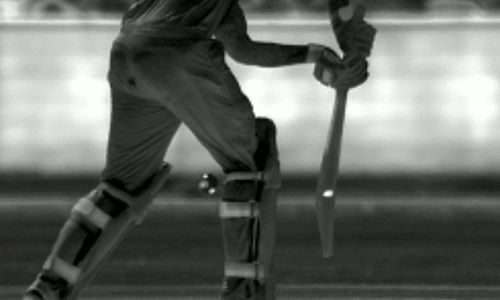
The use of hot spots has helped umpires make more accurate decisions, especially when it comes to lbw (leg before wicket) and caught-behind dismissals. In the past, it was often difficult for umpires to determine if the ball had hit the bat or gloves, leading to incorrect decisions. Hot spots have helped eliminate this problem by providing clear evidence of whether the ball has hit the bat or gloves.
Hot spots have also helped reduce the number of controversial decisions in cricket. In the past, there have been instances where batsmen have been given out lbw or caught behind, only for replays to show that the ball had missed the bat or gloves. Hot spots have helped reduce these instances by providing clear evidence of what happened.
Snickometer
The Snickometer is a piece of technology that is used in cricket to help determine whether the ball made contact with the batsman’s bat or gloves. It works by using a microphone to pick up sounds that are too high frequency for the human ear to hear and then analyzing those sounds to determine if there was any contact between the ball and the bat.
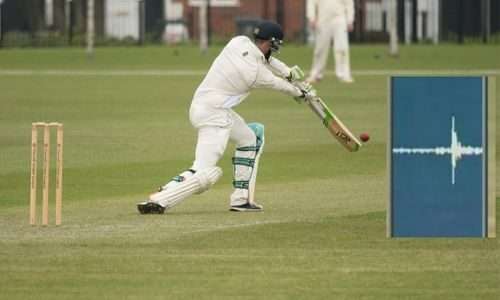
MORE TO READS” How to select the right coaching center to become a cricketer
The Snickometer has been a valuable tool for cricket umpires and television broadcasters, as it allows them to more accurately make decisions about whether the ball hit the bat or not. This is particularly important in situations where the umpire may not have had a clear view of the ball, or where the ball may have hit the bat in a way that was difficult to see.
Stump Mic
One advancement of technology in cricket that has had a significant impact on the game is the use of the stump microphone, or “stump mic.”
A stump mic is a microphone placed on the stumps at either end of the pitch in a cricket match. It is used to amplify the sounds of the game, including the ball hitting the bat, the ball hitting the wicket, and the players communicating on the field.
The use of the stump mic has allowed for more accurate and detailed commentary of the game, as it allows the commentators to hear the sounds of the game in real time. It has also helped umpires make more accurate decisions, as they can hear the sound of the ball hitting the stumps or the bat more clearly.
Moreover, in commentary and umpiring, the stump mic has also played a role in helping to expose instances of ball tampering and other forms of cheating in the sport. By amplifying the sounds of the ball being tampered with, the stump mic has helped to catch players attempting to alter the condition of the ball in an attempt to gain an unfair advantage.
DRS (Decision Review System)
The DRS, or Decision Review System, has revolutionized the game of cricket with its implementation in international matches. The DRS is a technology-based system that allows players to challenge on-field umpiring decisions.
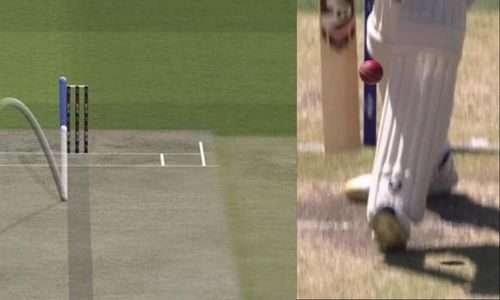
The full form of DRS in cricket is the Decision Review System. This system was introduced in order to improve the accuracy of decision-making in cricket and reduce the number of incorrect decisions made by the on-field umpires.
The DRS system works by allowing each team to challenge a certain number of decisions made by the on-field umpires during the course of a match. When a team challenges a decision, the DRS technology is used to review the decision and determine whether or not it was correct. If the review determines that the on-field umpire’s decision was incorrect, the decision is overturned and the correct decision is given.
The DRS system has been widely embraced by the cricket community, as it has helped to improve the accuracy of decision-making and reduce the number of incorrect decisions made by the on-field umpires. The full form of DRS, the Decision Review System, has been a valuable addition to the game of cricket and has played a significant role in the advancement of technology in the sport.
Ball & Bat sensor technology
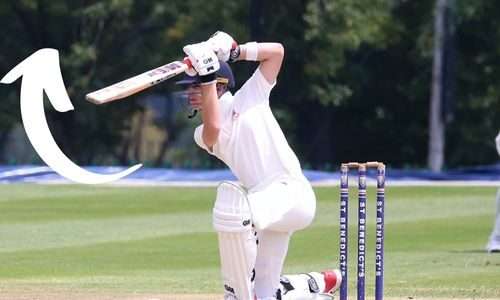
The use of sensors in cricket balls and bats has allowed for the measurement and analysis of various aspects of delivery or shot, such as speed, spin, seam position, and power. This has provided players and coaches with valuable insights into their performance and has allowed for real-time adjustments to be made. The data collected by the sensors is also highly accurate and reliable, making it useful for off-field analysis and training. The use of sensors has brought a new level of precision to the sport and has played a significant role in the advancement of technology in cricket.
Wearable technology in Cricket
Wearable technology has made significant advancements in the world of cricket in recent years. One of the most notable examples is the use of smartwatches and fitness trackers by players to monitor their physical performance and recovery. These devices allow players to track their heart rate, sleep patterns, and other key metrics, giving them valuable insight into their physical well-being and helping them optimize their training and recovery routines.

Wearable technology, such as fitness trackers and smart glasses, has been used in the field of sports to improve player performance and prevent injuries. Smart glasses, which use machine learning to analyze the movements of opponents, can give players an advantage in anticipating their actions. Wearable devices that monitor a player’s movements can also help reduce the risk of repetitive strain injuries and keep players healthy.
Overall, the advancement of wearable technology in cricket has allowed players to train smarter, perform better, and stay healthier. Also leading to a higher level of play and a more exciting and competitive sport.
If you enjoyed this post, be sure to check out some of our other recent articles. We have a wide variety of cricket topics covered on our blog, and we’re sure you’ll find something that interests you.”
